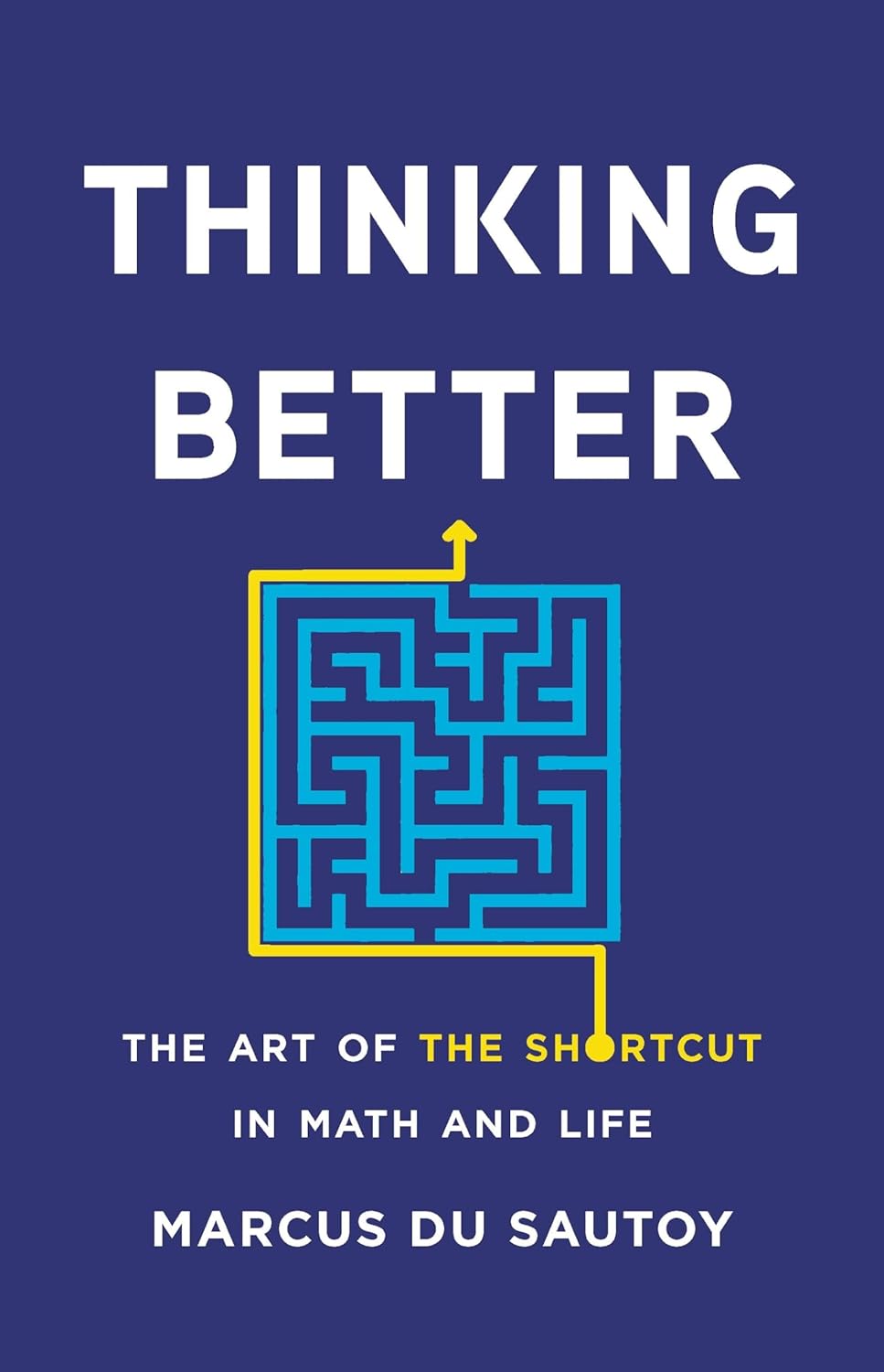Book review of Thinking Better by Marcus Du Sautoy

Overview
“Thinking Better: The Art of the Shortcut” by Marcus du Sautoy explores the power of mathematical thinking in everyday life, offering insights on how to use shortcuts for more efficient problem-solving and decision-making. The book reveals math as an invaluable tool for innovation and creativity, demonstrating its application beyond traditional academic boundaries.
Key Themes
It highlights the universal language of mathematics as a powerful tool to simplify and effectively tackle complex challenges.
Examples Used!
The following table outlines the key techniques and examples used by the author.
| Chapter Title | Example |
|---|---|
| DEPARTURE | Setting the stage for mathematical shortcuts. |
| CHAPTER 1 THE PATTERN SHORTCUT | Recognizing patterns in data to predict trends. |
| PIT STOP 1 MUSIC | Using patterns in music to compose or analyze. |
| CHAPTER 2 THE CALCULATED SHORTCUT | Utilizing algorithms for faster calculations. |
| PIT STOP 2 START-UP | Implementing efficient algorithms in a tech start-up. |
| CHAPTER 3 THE LANGUAGE SHORTCUT | Language processing shortcuts in AI. |
| PIT STOP 3 MEMORY | Techniques to improve memory retention. |
| CHAPTER 4 THE GEOMETRIC SHORTCUT | Solving spatial problems with geometric principles. |
| PIT STOP 4 JOURNEYS | Optimizing travel routes using geometry. |
| CHAPTER 5 THE DIAGRAM SHORTCUT | Visualizing complex information with diagrams. |
| PIT STOP 5 ECONOMICS | Economic models simplifying market predictions. |
| CHAPTER 6 THE CALCULUS SHORTCUT | Applying calculus to measure changes over time. |
| PIT STOP 6 ART | Using calculus in art for creating dynamic forms. |
| CHAPTER 7 THE DATA SHORTCUT | Big data analytics for insights. |
| PIT STOP 7 PSYCHOTHERAPY | Data-driven approaches in psychotherapy. |
| CHAPTER 8 THE PROBABILITY SHORTCUT | Probability in risk assessment and forecasting. |
| PIT STOP 8 FINANCE | Financial models based on probability. |
| CHAPTER 9 THE NETWORK SHORTCUT | Network theory in social media analysis. |
| PIT STOP 9 NEUROSCIENCE | Mapping neural networks for understanding the brain. |
| CHAPTER 10 THE IMPOSSIBLE SHORTCUT | Tackling seemingly impossible problems. |
| ARRIVAL | Concluding insights and applications. |
Conclusion
To apply the concepts from “Thinking Better: The Art of the Shortcut,” one could start by recognizing patterns and efficiencies in their own work or daily routines, then use mathematical reasoning and shortcuts to streamline tasks and problem-solving processes. For example, a teacher might use the pattern shortcut to identify trends in student performance and tailor their teaching methods accordingly, while a cybersecurity expert could apply the data shortcut to analyze security breaches more effectively.